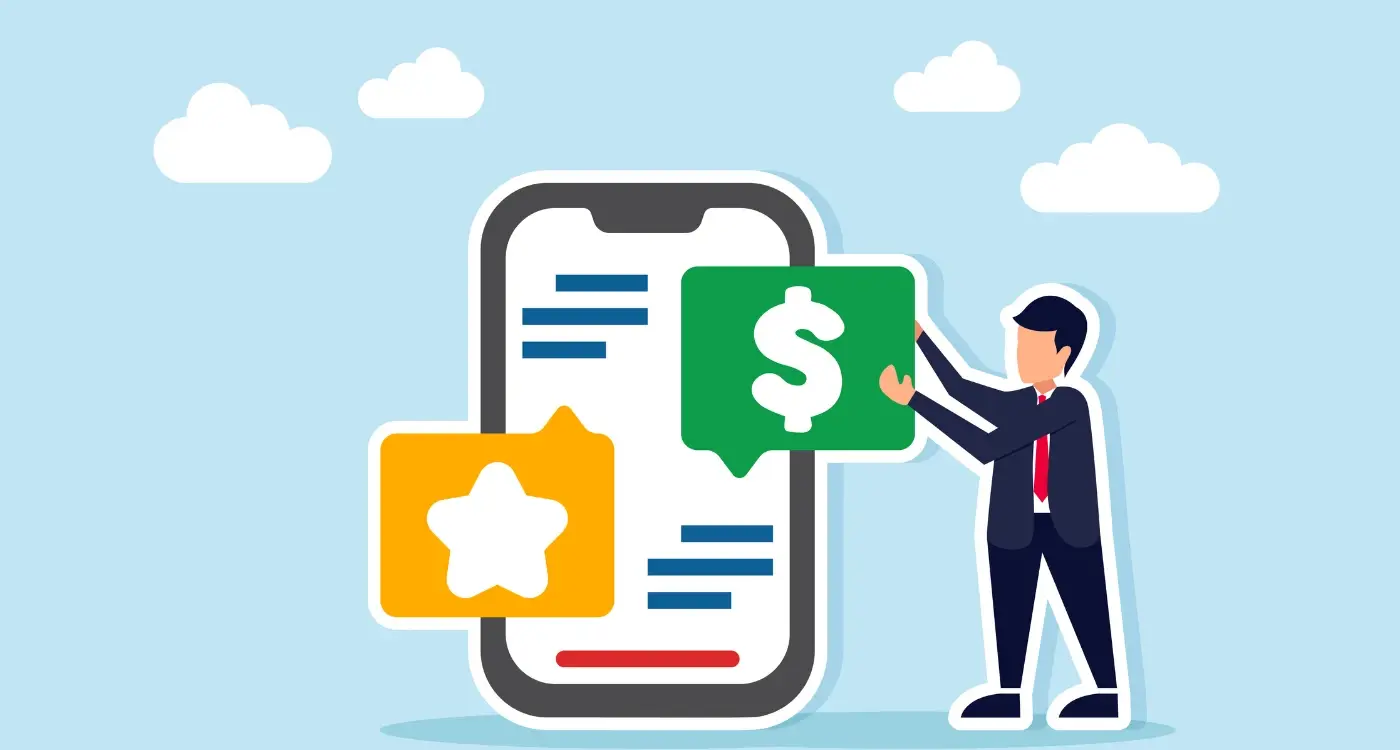What Are the Maintenance Costs for a Mobile App?
As a business owner, you know that creating a mobile app is just the start of your journey. There is joy in seeing your ideas come to life, but let’s be honest - the real work begins after the launch. Mobile app maintenance can seem like a minefield of unexpected costs and technical jargon, and it’s our mission here at Glance to help you navigate it smoothly.
Here’s what you'll walk away with:
- A clear understanding of why maintenance matters
- Insights into what influences maintenance costs
- Practical tips on how to manage and potentially reduce these costs
Taking care of your app from day one isn’t just a good idea; it's essential for your success in the long run.Glance Team
We'll break everything down so that mobile app maintenance stops feeling like a chore and starts feeling like a strategic advantage. Ready to dive in? Let’s get started.
Why Mobile App Maintenance Matters
Building your mobile app is like buying a brand-new car. You wouldn't skip oil changes, services or new tyres, right? Ongoing maintenance is essential for keeping your app running smoothly and is incredibly valuable for your business.
Maintenance keeps your app up-to-date with the latest technology. Mobile operating systems are often updated, and these updates usually require changes to your app. Without proper maintenance, your app might not work well with the latest versions of iOS or Android, leading to a bad user experience and fewer users. New devices also get launched, sometimes with new features that will make your app even better. Keeping on top of these updates is also key for your long-term user retention.
We also need to consider user expectations. Users today have no patience for apps that crash or don't work well. Updates based on user feedback show you care, building loyalty and improving your ratings in app stores. Investing in regular app maintenance isn't just good practice—it's essential. It helps you avoid expensive problems later and keeps your app relevant, competitive, and useful. Stick with it, and you'll find that maintenance pays for itself many times over.
Understanding the Core Components of Maintenance
Maintaining a mobile app isn't just about keeping things in working order, it's ensuring it's always delivering the value to users that you anticipated when you launched it. Here are some key maintenance areas to give you a clearer picture...
1. Preventive Maintenance: This is your routine health checkup. Regular error checking, performance optimisations, and tweaking those little things that help keep your app running swiftly. Just like in life, a little prevention goes a long way in avoiding big issues down the road.
2. Corrective Maintenance: No matter how well you plan, things sometimes go wrong. Corrective maintenance is relevant when your app experiences bugs, glitches, or any unforeseen issues. Much like finding that annoying squeak in your car, it's about identifying the problem and fixing it to restore normal functionality.
3. Adaptive Maintenance: The digital world moves fast. New devices and operating systems roll out, and user expectations evolve. Adaptive maintenance ensures your app stays compatible with these changes.
4. Perfective Maintenance: Users love shiny new features. Perfective maintenance involves enhancing and perfecting your app based on user feedback. Adding new features make your customer journey more enjoyable and efficient.
Understanding these core components helps simplify the maintenance process, giving you a solid framework to plan and budget effectively. So, next time you think about your app’s upkeep, remember—it’s all about prevention, correction, adaptation, and perfection.
Factors That Influence Maintenance Costs
As we've seen, maintaining a mobile app isn't just about keeping things running smoothly – it’s about continuously improving and adapting. Just like a car needs regular servicing (sometimes costly!) to stay roadworthy, your app also requires ongoing care to perform well. Here are some key factors that can influence the maintenance costs of your app:
- App Complexity: The more complex your app, the higher the costs. Complex functionalities, multiple features, and advanced technologies will demand more upkeep. It's the difference between maintaining a high-end sports car versus a simple bicycle.
- Number of Users: An app with a large user base requires more resources to manage user feedback, monitor performance, and scale appropriately. More users mean more potential issues to address due to varying devices and operating systems.
- Frequency of Updates: Frequent updates add to the cost, but they're essential to keep your app relevant and efficient. Remember, those updates are what keep your app fresh and exciting for users!
- Platform and Operating System: Different platforms, like iOS and Android, have different maintenance requirements. Plus, OS updates can sometimes cause compatibility issues, leading to extra work to ensure your app runs smoothly.
- Third-Party Services: If your app relies on third-party services (like payment gateways or analytics tools), those integrations need regular updates and monitoring. This can add to your costs.
- Security Updates: Keeping your app secure is non-negotiable. New vulnerabilities are discovered all the time, and staying one step ahead is crucial – and can be costly.
- Marketing and User Acquisition: You need to keep attracting and engaging users. Marketing strategies and campaigns aren't just initial launch activities but continuous efforts that have budgeting implications.
By understanding these factors, you can plan better and keep your maintenance budget in check. Remember, a well-maintained app is not just a cost – it's an investment in your overall success.
Scalability and Performance Optimisation
When planning for your app's future, scalability and performance optimisation are key. Your app needs space to grow and thrive. Scalability ensures your app can handle more users smoothly as your business grows. No one enjoys a slow app, especially your customers. Performance optimisation makes sure your app runs fast and efficiently.
Scalability means designing your app’s structure to support growth. This includes making your code and server configurations more efficient, switching to cloud services that can grow with you, or using microservices that let different parts of your app expand on their own. Maintaining scalability prevents big, costly changes later.
Performance optimisation is all about speed and responsiveness. Slow load times and crashes can make users leave quickly. This can include compressing images, improving code quality, and monitoring server performance. Happy users are more likely to come back.
Investing in scalability and performance optimisation isn’t just about today – it's about making sure your app can grow with your business, keeping your customers happy and engaged in the long run increasing your overall ROI.
Breaking Down Mobile App Maintenance Costs
So let's now look at what you're likely to spend on maintaining your app. Here’s a simple breakdown:
- Bug Fixes & Routine Updates: Expect to spend around £200-£500 per month in the initial months after launch. Frequent fixes ensure smooth operation and keep your app relevant.
- Security Patches: These are crucial. Budget around £300-£500 per quarter to keep your app safe from vulnerabilities.
- New Features & Enhancements: Fresh features keep users engaged. Plan to spend £500-£1,000 per month, depending on complexity and what your product roadmap looks like.
- Third-Party Services: Payment gateways, analytics tools, etc., come with subscription fees. Allocate around £50-£200 monthly for these services.
- Server Costs: Hosting and server maintenance can cost you £20-£750 per month, depending on usage.
- Compliance: Staying legal and up to code can cost around £100-£500 annually, more in regulated industries.
Mobile app maintenance typically costs around 15-20% of the original development budget annually. That might seem like a lot, but investing in maintenance can save you from hefty costs down the road and keep your users happy.
So, how can you manage these costs effectively without cutting corners? Well, start by prioritising regular updates and fixes. Setting aside a dedicated budget for maintenance from the outset can also make the ongoing costs less daunting. Consider it an investment in your app’s future and a key factor in user satisfaction.
In the end, maintaining your app is not just a technical issue; it's a strategic move to ensure your app thrives in a competitive market.
Conclusion
So, there you have it. Maintaining a mobile app isn’t just an option, it’s an investment in your company’s success. A well-maintained app will save you from larger headaches down the road. At Glance, we believe in a proactive approach to app maintenance. Regular updates, timely security patches, optimal performance, and staying on top of third-party integrations aren’t just technical necessities—they’re the building blocks of a positive user experience. After all, a smooth, reliable app keeps your customers happy, engaged, and loyal to your brand.
We hope this guide has given you a clearer picture of what to expect in terms of maintenance costs and why they’re essential. Whether you decide to partner up with us or another team, the key takeaway here is simple: don’t skimp on app maintenance. Your business, your users, and your future self (who won't be dealing with a mountain of bug reports) will thank you.
If you have any questions or need tailored advice for your specific app, feel free to give us a shout. We're here to help you navigate this journey with confidence and maybe even a bit of fun.
Until next time, happy app maintaining!
Share this
Subscribe To Our Learning Centre
You May Also Like
These Related Guides

How Much Does It Really Cost To Build An App?

How Can You Tell If Your App Is Worth the Money Spent?



